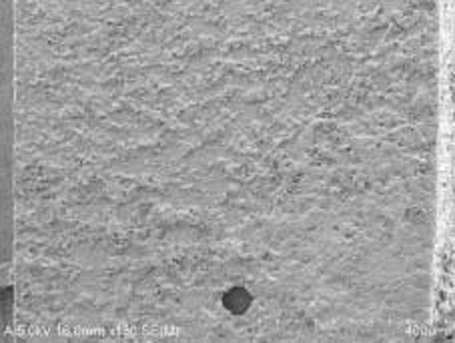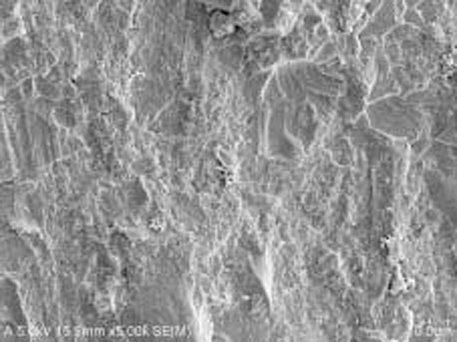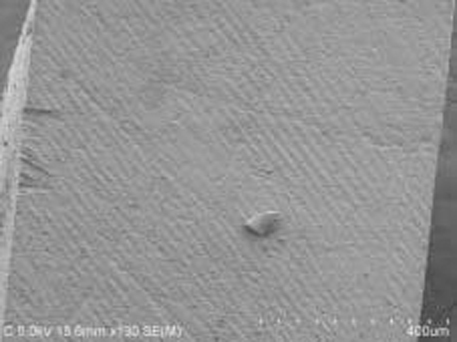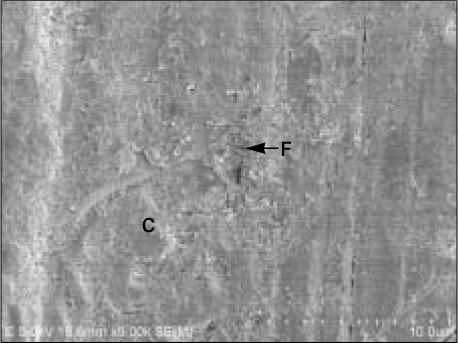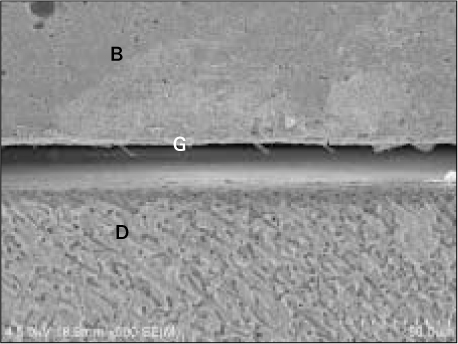J Korean Acad Conserv Dent.
2010 Mar;35(2):106-115. 10.5395/JKACD.2010.35.2.106.
Microtensile bond strength of self-etching and self-adhesive resin cements to dentin and indirect composite resin
- Affiliations
-
- 1Department of Conservative Dentistry, College of Dentistry, Chosun University, Gwangju, Korea. ygcho@chosun.ac.kr
- 2Department of Dentistry, Graduated School of Chonnam National University, Gwangju, Korea.
- KMID: 2176298
- DOI: http://doi.org/10.5395/JKACD.2010.35.2.106
Abstract
- The purpose of this study was to evaluate the microtensile bond strength (microTBS), failure modes and bonding interfaces of self-etching and three self-adhesive resin cements to dentin and indirect composite resin. Cylindrical composite blocks (Tescera, Bisco Inc.) were luted with resin cements (PA: Panavia F 2.0, Kuraray Medical Inc., RE: RelyX Unicem Clicker, 3M ESPE., MA: Maxem, Kerr Co., BI: BisCem, Bisco Inc.) on the prepared occlusal dentin surfaces of 20 extracted molars. After storage in distilled water for 24 h, 1.0 mm x 1.0 mm composite-dentin beams were prepared. microTBS was tested at a cross-head speed of 0.5 mm/min. Data were analyzed with one-way ANOVA and Tukey's HSD test. Dentin sides of all fractured specimens and interfaces of resin cements-dentin or resin cements-composite were examined at FE-SEM (Field Emission-Scanning Electron Microscope). In conclusion, PA and RE showed higher bond strength and closer adaptation than MA and BI when indirect composite blocks were luted to dentin using a self-etching and three self-adhesive resin cements.
Keyword
MeSH Terms
Figure
Reference
-
1. Hikita K, Van Meerbeek B, De Munck J, Ikeda T, Van Landuyt K, Maida T, Lambrechts P, Peumans M. Bonding effectiveness of adhesive luting agents to enamel and dentin. Dent Mater. 2007. 23:71–80.
Article2. Lutz F, Krejci I, Barbaknow F. Quality and durability of marginal adaptation in bonded composite restorations. Dent Mater. 1991. 7:107–113.
Article3. El Zohairy AA, De Gee AJ, Mohsen MM, Feilzer AJ. Microtensile bond strength testing of luting cements to prefabricated CAD/CAM ceramic and composite blocks. Dent Mater. 2003. 19:575–583.
Article4. Song MH, Park SJ, Cho HG, Hwang YC, Oh WM, Hwang IN. Influence of adhesive application on shear bond strength of the resin cement to indirect resin composite. J Korean Acad Conserv Dent. 2008. 33:419–426.
Article5. Duarte S, Botta AC, Meire M, Saden A. Microtensile bond strength and scanning electron microscopic evaluation of self-adhesive and self-etch resin cements to intact and etched enamel. J Prosthet Dent. 2008. 100:203–210.
Article6. Mak YF, Lai SCN, Cheung GSP, Chan AWK, Tay FR, Pashley DH. Micro-tensile bond testing of resin cements to dentin and indirect resin composite. Dent Mater. 2002. 18:609–621.
Article7. Goracci C, Cury AH, Cantoro A, Papacchini F, Tay FR, Ferrari M. Microtensile bond strength and interfacial properties of self-etching and self-adhesive resin cements used to lute composite onlays under different seating forces. J Adhes Dent. 2006. 8:327–335.8. Hiraishi N, Yiu CKY, King NM, Tay FR. Effect of pulpal pressure on the microtensile bond strength of luting resin cements to human dentin. Dent Mater. 2009. 25:58–66.
Article9. Jayasooriya PR, Perira PN, Nikaido T, Tagami J. Efficacy of a resin coating on bond strengths of resin cement to dentin. J Esthet Restor Dent. 2003. 15:105–113.
Article10. De Munck J, Vargas M, Van Landuyt K, Hikita K, Lambrechts P, Van Meerbeek B. Bonding of an auto-adhesive luting material to enamel and dentin. Dent Mater. 2004. 20:963–971.
Article11. Al-Assaf K, Chakmakchi M, Palaghias G, Karanika-Kouma A, Eliades G. Interfacial characteristics of adhesive luting resins and composites with dentine. Dent Mater. 2007. 23:829–839.
Article12. Yang B, Ludwig K, Adelung R, Kern M. Micro-tensile bond strength of three luting resins to human regional dentin. Dent Mater. 2006. 22:45–56.
Article13. Della Bona A, van Noort R. Shear vs tensile bond strength of resin composite bonded to ceramic. J Dent Res. 1995. 74:1591–1596.
Article14. Chersoni S, Suppa P, Grandini S, Goracci G, Monticelli F, Yiu C. In vivo and vitro permeability of one-step self-etch adhesives. J Dent Res. 2004. 83:459–464.
Article15. Han SH, Cho YG. Effect of a desensitizer on dentinal bond strength in cementation of composite resin inlay. J Korean Acad Conserv Dent. 2009. 34:223–231.
Article16. Kim DS, Park SH, Choi KW, Choi KK. The effect of bonding resin on bond strength of dual-cure resin cements. J Korean Acad Conserv Dent. 2007. 32:426–436.
Article17. Abo-Hamar SE, Hiller KA, Jung H, Federlin M, Friedl KH, Schmalz G. Bond strength of a new universal self-adhesive resin luting cement to dentin and enamel. Clin Oral Investig. 2005. 9:161–167.
Article18. Monticelli F, Osorio R, Mazzitelli C, Ferrari M, Toledano M. Limited decalcification/diffusion of self-adhesive cements into dentin. J Dent Res. 2008. 87:974–976.
Article19. Mazzitelli C, Monticelli F, Osorio R, Casucci A, Toledano M, Ferrari M. Effect of simulated pulpal pressure on self-adhesive cements bonding to dentin. Dent Mater. 2008. 24:1156–1163.
Article20. Moszner N, Salz U, Zimmermann J. Chemical aspects of self-etching enamel-dentin adhesives: a systematic review. Dent Mater. 2005. 21:895–910.
Article21. Shortall AC, Baylis RL, Wilson HJ. Composite inaly/luting resin bond strength-surface tratment effects. J Dent. 1996. 24:129–135.
- Full Text Links
- Actions
-
Cited
- CITED
-
- Close
- Share
- Similar articles
-
- The effect of bonding resin on bond strength of dual-cure resin cements
- Compatibility of self-etching dentin adhesives with resin luting cements
- Effect of an intermediate bonding resin and flowable resin on the compatibility of two-step total etching adhesives with a self-curing composite resin
- Influence of adhesive application on shear bond strength of the resin cement to indirect resin composite
- Effect of film thickness of resin cement on bonding efficiency in indirect composite restoration

